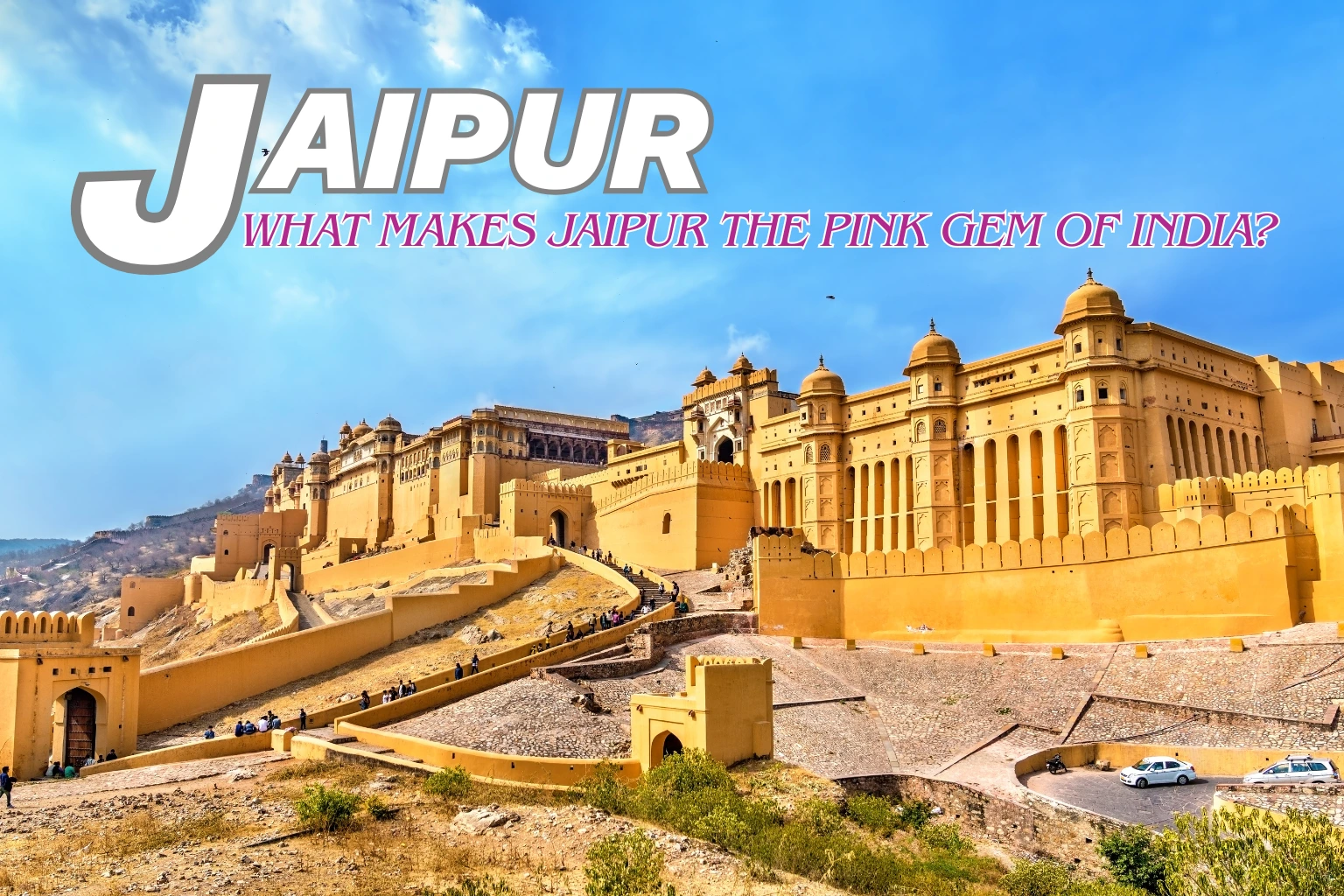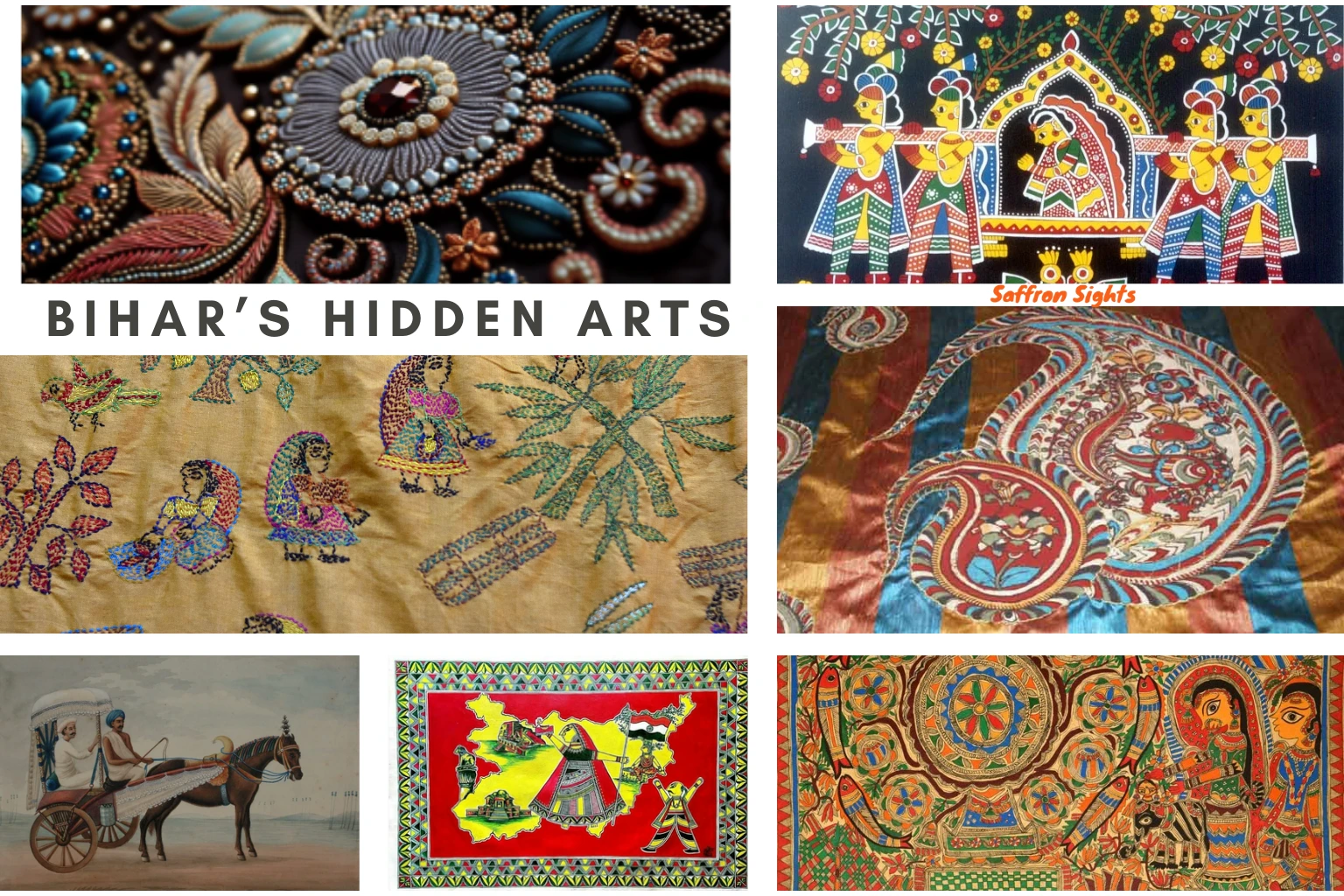Sumit Pandey
Jaipur wears its history like a crown and smiles in warm shades of pink. In the heart of Rajasthan, the city opens its gates to everyone. People call it the Pink City because its streets glow in terracotta and rose, turning sunlight into a soft blush on every wall. But Jaipur has more than a pretty face. It is a living classroom where forts speak, palaces whisper, markets sparkle, and food tells stories you can taste.
We will travel through time together. We will explore what the city was, what it is right now, and what it might become. Along the way, you will hear the stories behind famous places, learn the best time to visit them, discover why they matter, and find simple, fun things you can do.
Let’s start at the beginning and walk the city step by step, like curious friends on a pink-stone path.
How Jaipur Became the Pink City
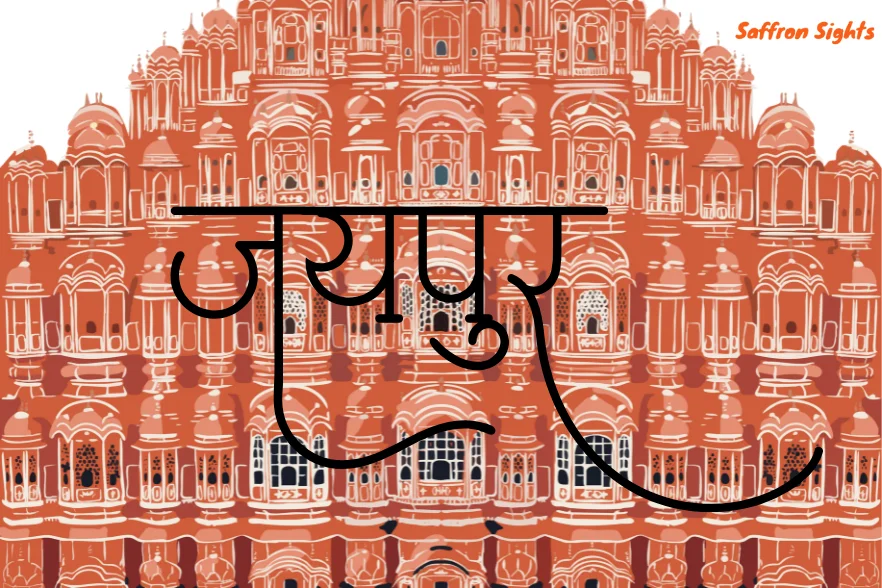
In 1727, a wise ruler named Maharaja Sawai Jai Singh II founded Jaipur. He loved science, smart design, and order. He planned the city in a grid so the streets were straight and easy to follow. Many Indian cities grew slowly without a plan, but Jaipur was planned from the start. That is why it is often called India’s first planned capital.
Why is the city pink? In 1876, the Prince of Wales came to visit. To honor him and to show hospitality, the ruler at that time, Maharaja Sawai Ram Singh, ordered the city to be painted in a warm pink color.
People liked how welcoming and cheerful it looked, so the pink stayed. Today, the color is part of Jaipur’s identity. When you walk through the gates of the old walled city, the pink walls feel like a friendly hug.
Why visit Jaipur:
You learn about history right on the street. You see amazing buildings. You taste new foods. You meet artists who still practice old crafts. And you understand how a city can be both old and modern at the same time.
Best time to visit:
The cooler months from October to March feel pleasant for outdoor sightseeing. Early mornings are calm. Evenings are great for sunsets and markets. Summers are hot, so plan indoor visits in the afternoon if you come then. Carry water at all times.
How to explore:
Pick two or three main sights each day. Add one market or a food stop. Keep a little free time to rest. Jaipur is big. It is better to enjoy a few places fully than try to rush through everything.
Amber Fort: The Hilltop Crown of Jaipur
Amber Fort, also called Amer Fort, stands on a hill a short drive from the city. It rises with strong walls, grand gates, and shining marble. The fort began in the 16th century under Raja Man Singh, and later rulers expanded it. The style is a blend of Rajput and Mughal design. You will see red sandstone, white marble, and delicate carvings that look like lace made from stone.
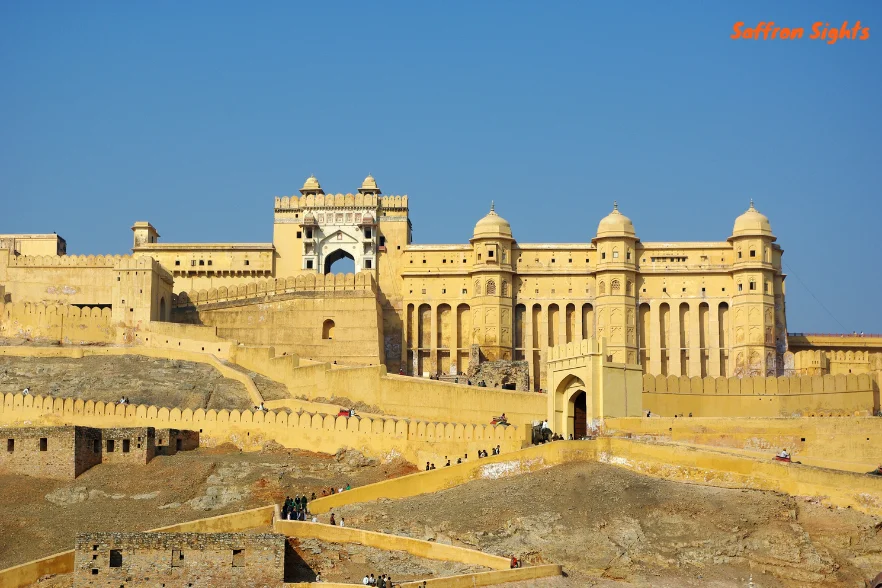
What made Amber Fort special in the past:
It was both a palace and a fort. That means it was safe like a fortress and beautiful like a royal home. The layout was smart. There were hidden paths, tall watchtowers, and water systems to keep rooms cool. The most magical room is the Sheesh Mahal, the Palace of Mirrors. Even a tiny candle can light up the whole room because thousands of small mirrors reflect the glow.
Many people say queens could enjoy the stars indoors when it was too cold outside. This story shows how clever design can turn everyday light into wonder.
What to look for now:
Walk through the Suraj Pol, the Sun Gate. Climb the courtyards. Notice the beautiful marble screens. See the Ganesh Pol gate with bright paintings. Visit Sheesh Mahal and look up. From the ramparts, you get a wide view of hills and lakes.
In the evening, many visitors watch the light and sound show that tells the fort’s story with music and narration.
Things to do:
Take photos near the mirror, work, and the arches. Count how many different patterns you can spot in the carvings. Try to find the water channels that carried cool water around the palace. If you like sketching, bring a small notebook and draw a window or a design. It is a calm way to remember the details.
Good to know:
Wear comfortable shoes because there are steps and slopes. Mornings are less crowded. The sun can be intense, so wear a hat and carry water. Kindly choose humane transport options. Walking or taking the official jeep service up the hill is a responsible choice.
Why it matters for students:
Amber Fort shows how art and engineering work together. It teaches about defense, cooling systems, and stonework. You see how rulers planned for safety and comfort at the same time.
Fun Fact: Jaipur was planned using ideas from Vastu Shastra, an old system of design.
Hawa Mahal: The Palace of Winds That Watches the City
Hawa Mahal may be the most famous face of Jaipur. It is not a full palace with large halls. It is a high wall with 953 tiny windows called jharokhas. It was built in 1799 by Maharaja Sawai Pratap Singh. The design came from the shape of Lord Krishna’s crown. The front looks like a honeycomb. The small windows let wind pass through and keep the inside cool. Royal women used the windows to watch processions and street life while staying unseen, which followed their customs at that time.
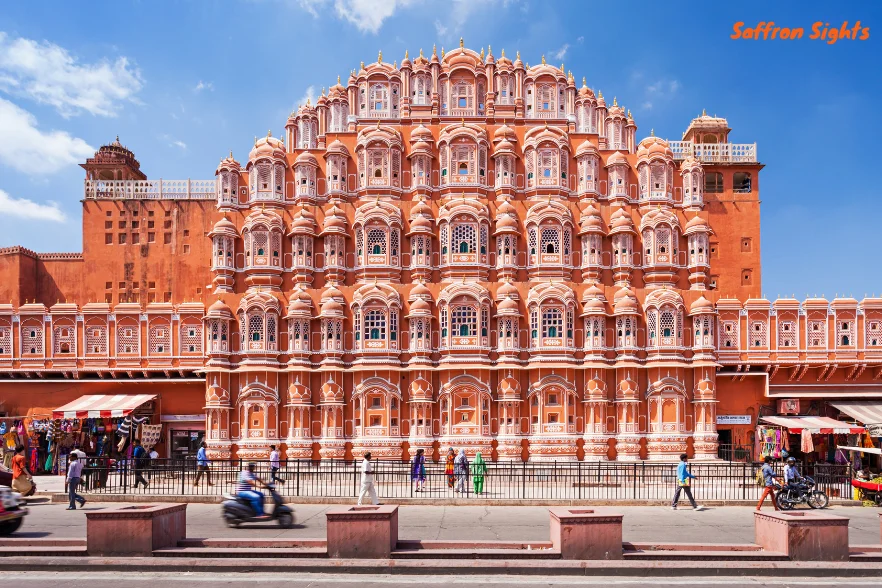
What to do there:
Stand across the street to see the full front. Notice how the windows are arranged. Climb inside to the upper floors and look out over Johari Bazaar. Feel the breeze. Imagine music and colors moving below during festivals two hundred years ago.
Fun learning:
Hawa Mahal teaches climate-friendly design. The small openings create natural airflow. The building shades itself. In a hot place like Rajasthan, that is very useful. You can think of it as an early form of innovative cooling without machines.
When to visit:
Morning light makes the pink front glow softly. Late afternoon gives warm shadows. Both times are great for photos.
Pro tip:
After your visit, walk to a nearby rooftop cafe. Order a cool drink and enjoy the view. It is a simple joy, and you can sketch the building or note down your thoughts.
Fun Fact: The city turned pink in 1876 to welcome a royal guest and has kept the color ever since.
City Palace: The Living Heart of Jaipur
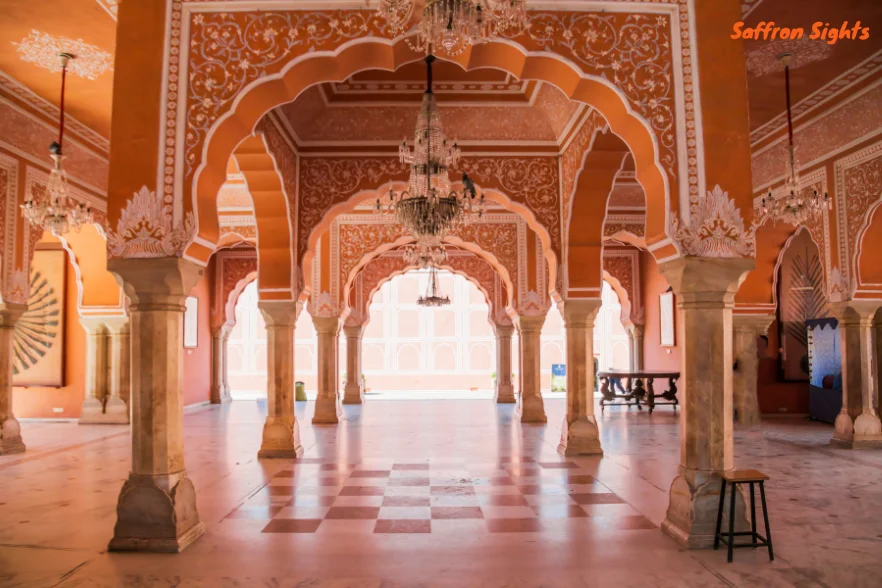
City Palace sits in the center of the old city. It was built by the founder, Jai Singh II, and later rulers added new parts. Today, it is a mix of museums, courtyards, and royal rooms. The current royal family still lives in part of it, which makes the palace feel alive and not just a monument from the past.
What to see:
Mubarak Mahal is now a museum. It holds royal clothes and fine textiles. Chandra Mahal is the primary residence, and some floors are open with special tickets. Look for the famous Peacock Gate. There are four seasonal doorways with colorful designs. Each doorway shows a different mood and season. The carvings and paintwork show the care and time put into the most minor details.
Why it matters:
City Palace shows how power and art met in everyday life. It was a place for meetings, ceremonies, and rules. The design blends Mughal and Rajasthani styles, which teaches how cultures can mix and create something new. You can almost hear old footsteps in the wide courtyards.
Tips:
Check ticket types at the entrance so you know which areas you can visit. If you enjoy crafts, spend more time looking at fabrics and miniature paintings. Ask a guide or read signs to learn how natural colors were made from stones and plants.
Fun Fact: Hawa Mahal has 953 tiny windows that help air pass through and keep the building cool.
Jantar Mantar: A Stone Observatory That Measures Time
Jantar Mantar sits near the City Palace. It looks like a collection of strange shapes, but each one has a job. It is an observatory made by Jai Singh II in the 18th century. He loved astronomy and wanted very accurate measurements. The big stone tools track the sun, the stars, and time. The most famous instrument is the Samrat Yantra, the giant sundial. It can measure time very closely.
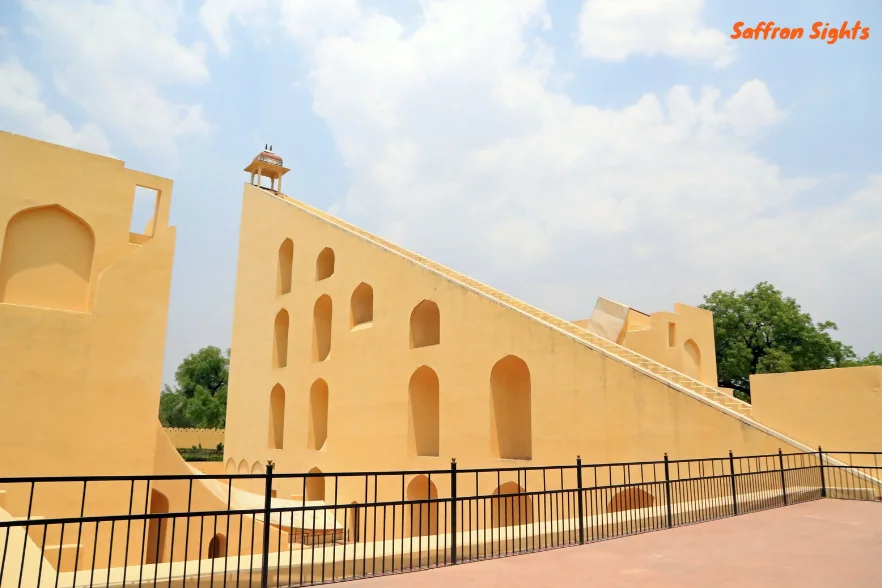
What to do:
Stand by the shadow of the sundial and watch it move. Think about how the sun’s position tells the hour. See the other instruments and read what each one does. Ask yourself how people built such accurate tools long before digital clocks.
Why it matters for students:
Jantar Mantar shows that science is not new in India. Observation, patience, and math were used to understand the sky. It mixes learning with design. It teaches that you can turn ideas into large working models that last for centuries.
Best time to visit:
Go when the sun is out so the shadows are transparent. Morning or late afternoon light makes the shapes look dramatic.
Nahargarh Fort: The Hill Guardian With Sunset Views
Nahargarh sits high on the Aravalli hills. The name means Abode of Tigers. It was built in 1734 to protect Jaipur. Later, it also became a retreat with lovely rooms for queens, linked by quiet corridors. Stories say a spirit named Nahar Singh once troubled the builders, so a temple was made to calm him. This legend adds a touch of mystery to the fort.
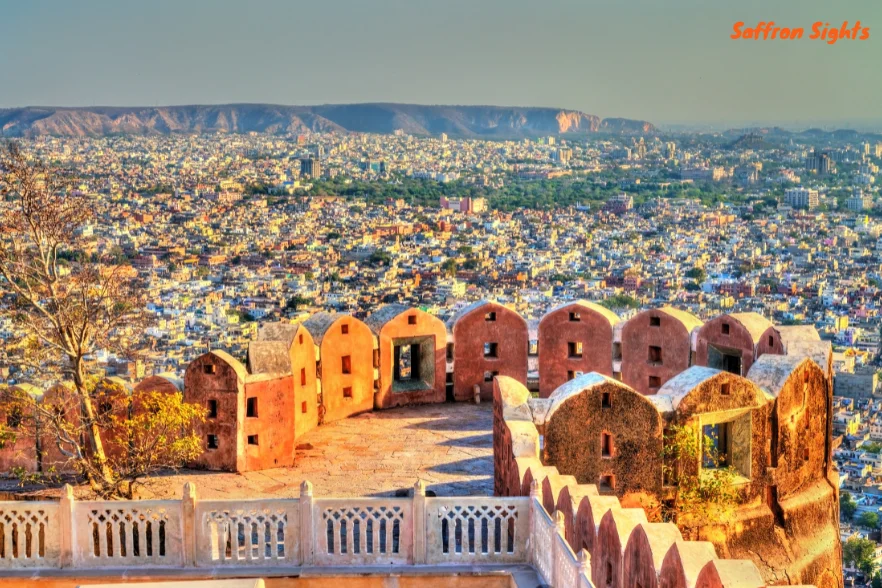
What to do:
Walk through Madhavendra Bhawan and notice how each suite is similar but opens to the same courtyard. Look at the murals. Then step outside and watch the city spread below like a carpet of pink and gold. The sunset here is famous.
Film fans:
Some scenes from popular movies were shot here. The fort’s walls, terraces, and light create a great backdrop for stories on screen.
Tip:
Carry a light jacket on winter evenings. Hills can be cooler than the city. Keep your camera ready as the sky changes color.
Fun Fact: Jantar Mantar’s big sundial can measure time very closely if the sun is out.
Jaigarh Fort: Strong Walls and a Famous Cannon
Jaigarh stands close to Amber Fort. It was built in 1726 mainly for defense. It feels tough and practical. The most famous object here is the Jaivana Cannon. It is very large and sits on wheels. It shows the power and skill of metalworkers from that time. There are long walls, watchtowers, and views of the hills and Amber below.
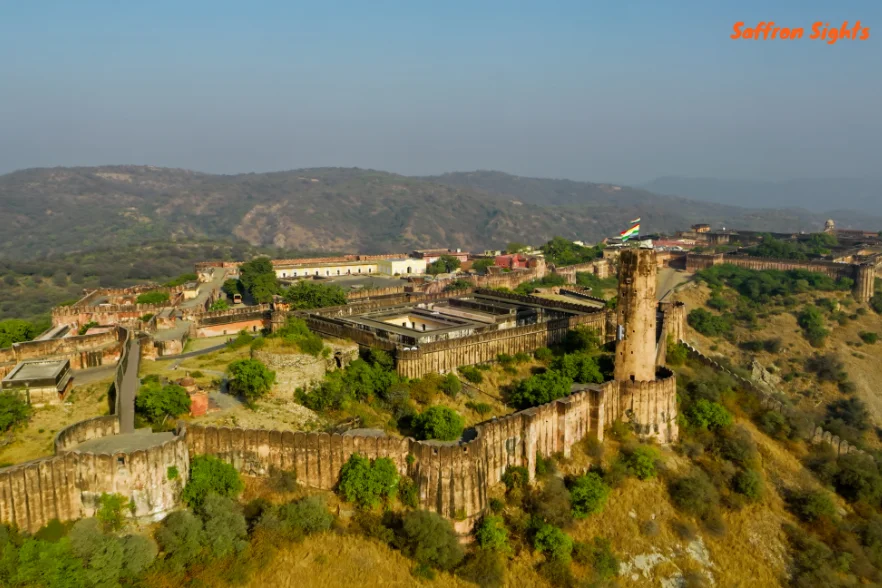
What to learn:
Jaigarh shows how kingdoms protected themselves. It also had foundries where weapons were made. This tells us the region was skilled in metalwork and planning. There are stories about secret passages and hidden treasures. Even if those are legends, they make the visit exciting and spark imagination.
Good to know:
Wear good shoes because paths can be uneven. Read the signs in the small museum to learn about coins, maps, and tools. It is like opening a chest of old knowledge.
Fun Fact: Market names still match the trades from long ago, which helps you know what to expect.
Jal Mahal: The Water Palace That Floats Like a Dream
Jal Mahal stands in the middle of Man Sagar Lake. When the water is high, most floors stay under the surface and only the top level shows like a crown. It was a place for summer rest and bird watching by the royals. You cannot usually go inside, but the view from the shore is lovely, especially at sunrise and sunset. The palace looks calm, and the hills behind it look like gentle guards.
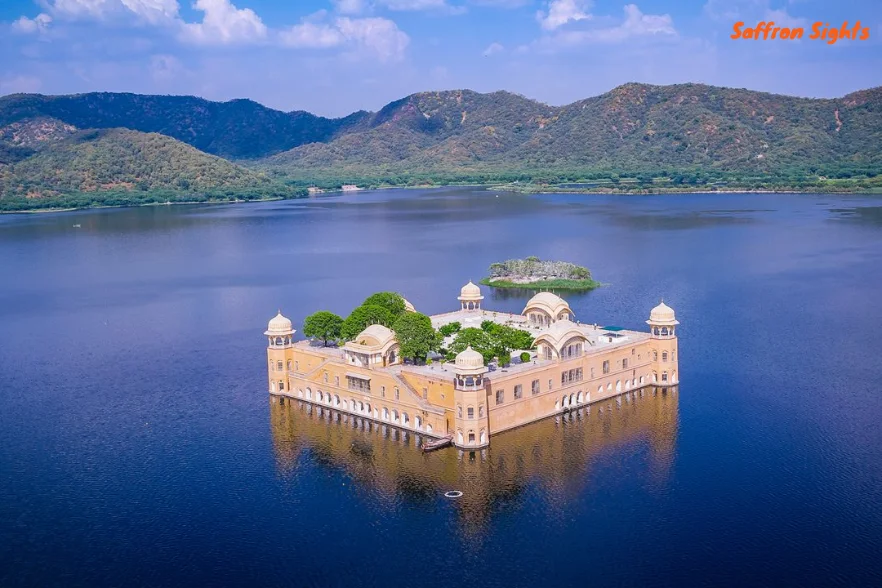
Why it matters:
Jal Mahal shows harmony between buildings and nature. It makes you think about how water, wind, and stone can create a peaceful scene. It also teaches that beauty does not need to be complicated. Simple symmetry and calm water can feel magical.
Tip:
Use the lakefront paths and look for birds. Bring a pair of small binoculars if you have them. The reflection of the palace in the water makes great photos.
Albert Hall Museum: A House of Art and Stories
At the edge of Ram Niwas Garden stands Albert Hall, a museum that opened in the late 1800s. The building itself is beautiful with domes and fine arches. Inside, the collections include old coins, weapons, musical instruments, textiles, paintings, pottery, and even an Egyptian mummy. You can spend hours here and still find something new in the next room.
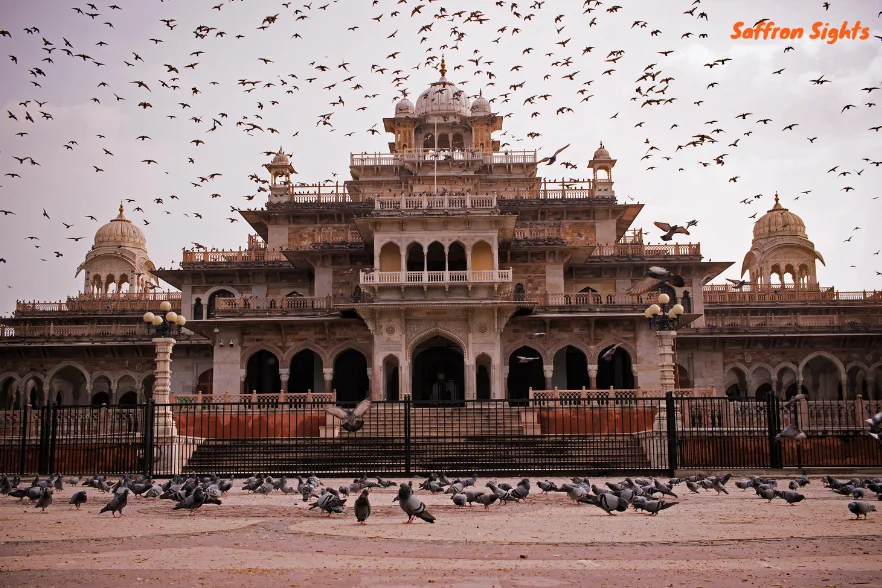
What to do:
Pick a theme to follow. For example, look only at textiles and notice patterns and dyes. Or look at metal objects and think about how they were made. Read the simple labels. Try to imagine how people used these objects in daily life.
Why it matters:
Museums keep memories safe. They help us understand how people dressed, cooked, prayed, and played. You come out with more respect for craft and for small skills that take years to learn.
Birla Mandir: White Marble, Quiet Hearts
Birla Mandir sits at the foot of Moti Dungri Hill. It is a modern temple made of white marble. It is dedicated to Lord Vishnu and Goddess Lakshmi. The carvings are clean and bright. You might see images of many wise figures, which show respect for knowledge and peace. At night, the temple glows softly.
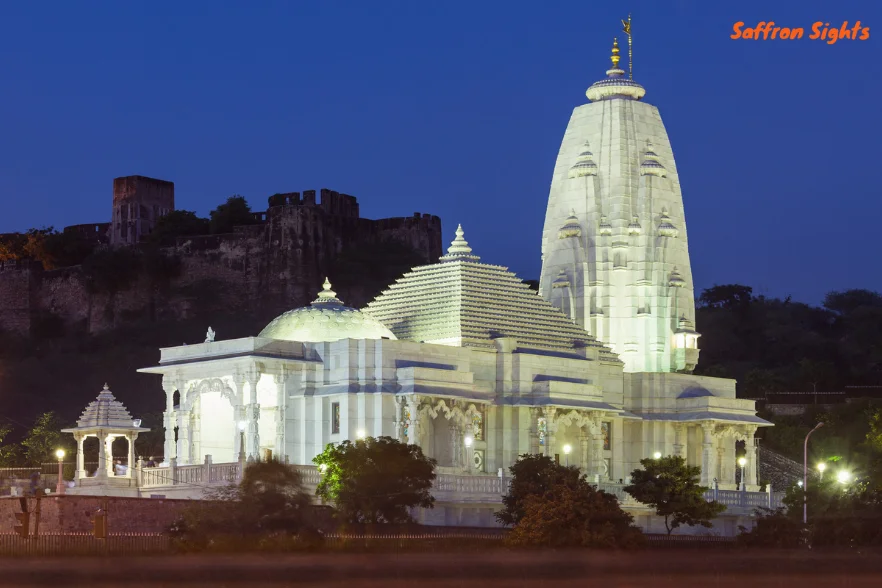
What to do:
Walk around slowly. Watch how the light touches the marble. Sit for a few minutes in silence. Even if you are not religious, this is a good place to rest your mind.
Why it matters:
The temple shows how faith and design can meet in a welcoming and straightforward way. It reminds us that cities need quiet places as much as they need markets and roads.
Galta Ji: The Temple in the Hills With Sacred Water
Galta Ji lies between hills, a short drive from the city. It has holy water tanks filled by natural springs. Pilgrims come to bathe here. The temple is set in a rocky valley, and monkeys live among the buildings. Because of them, many people call it the Monkey Temple.
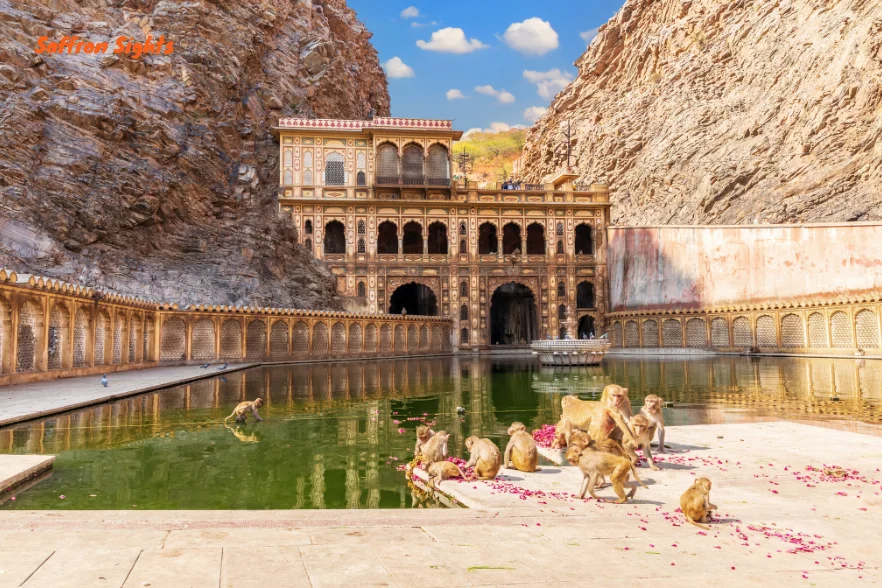
What to do:
Walk up and down the steps around the tanks. Watch how the sunlight plays on the water. Be respectful around the animals. Keep your snacks hidden and your hands to yourself.
What you learn:
Galta Ji shows how nature and worship can share space. The springs, the archways, the paintings, and the monkeys all create a scene that feels old and lively at the same time.
Panna Meena Ka Kund and Sisodia Rani Ka Bagh: Two Beautiful Stops
Panna Meena Ka Kund is a stepwell near Amber. Its stairs form neat patterns like a puzzle. In a dry land like Rajasthan, stepwells stored water and gave people a cool place to sit and chat. This one is perfect for photos and for studying repeating shapes.
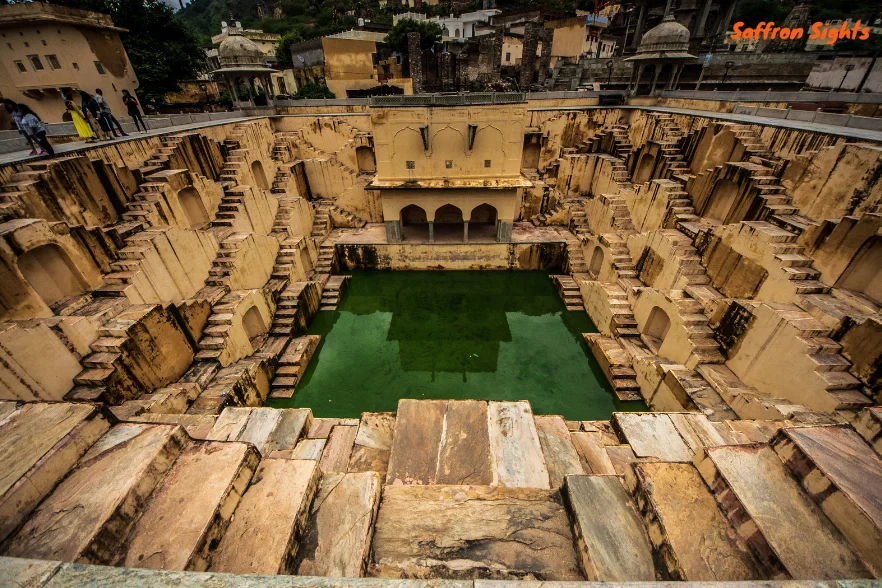
Sisodia Rani Ka Bagh is a lovely garden built for a queen. There are terraces, fountains, and painted walls that show the love story of Radha and Krishna. It is a quiet place to relax. You can sit on a bench, listen to the water, and feel your thoughts slow down.
More Temples and a Gate of Colors
Inside the City Palace complex is Govind Dev Ji Temple. Many devotees visit every day to see the idol of Lord Krishna. The energy during prayer time is strong and joyful. The Shila Devi Temple inside the Amber Fort is special for people who worship the goddess Kali. Moti Dungri Ganesh Temple, on a small hill, is popular with families who come to pray before big events.
Patrika Gate at Jawahar Circle has nine decorated arches that display designs from different parts of Rajasthan. It has become one of the most photographed places in the city because every arch looks like a painting you can walk through.
The Living Soul of Jaipur: Markets, Crafts, Food, and Daily Joy
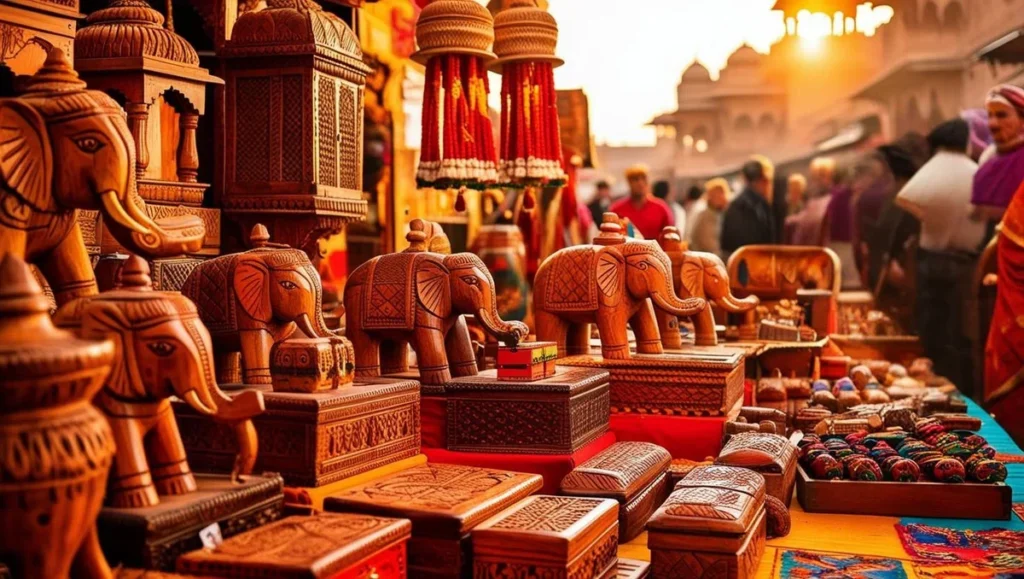
Jaipur is not only about old stones. Its life is in the streets, the sounds, and the colors. Markets here are full of craft traditions that have been passed down for hundreds of years.
Johari Bazaar: Sparkle and Skill
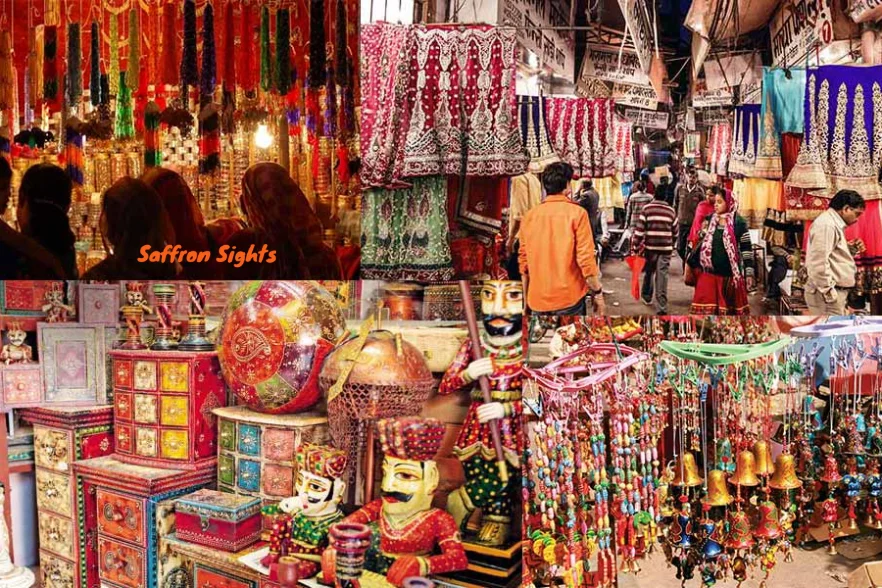
This is the jewelry market. You see Kundan, Meenakari, and Polki styles. These are careful techniques that use enamel, gold foil, and uncut stones. Families of artisans carry forward these skills. Many of them learned from their parents and grandparents. Even if you do not buy anything, just watching the glow of the displays is a treat.
Bapu Bazaar: Fabrics and Daily Finds
This market is full of textiles like block-printed cloth, soft quilts, and Mojari shoes. The prices range from budget to premium. You hear friendly bargaining and laughter. This is a great place for souvenirs. Look at the stitching and the print quality. Choose items that you will use again and again.
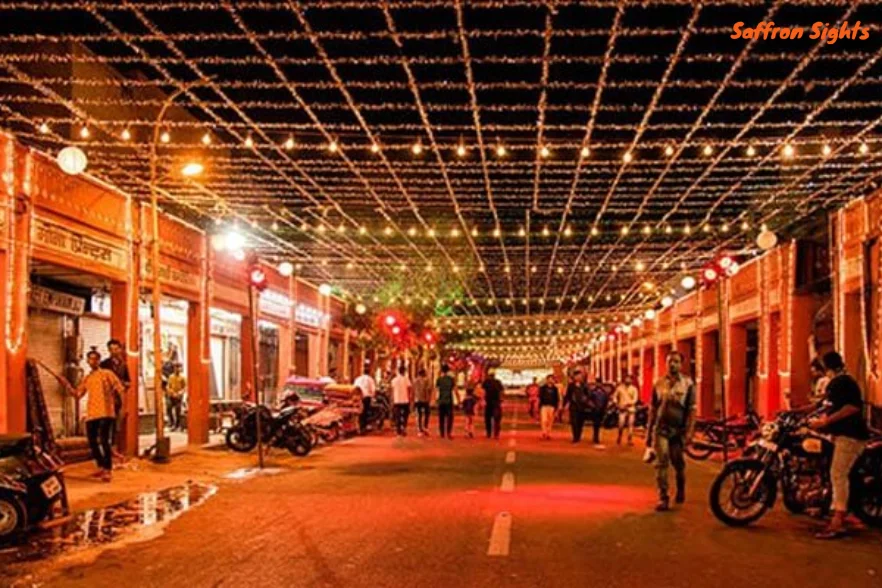
Tripolia Bazaar: Bangles and Metalwork
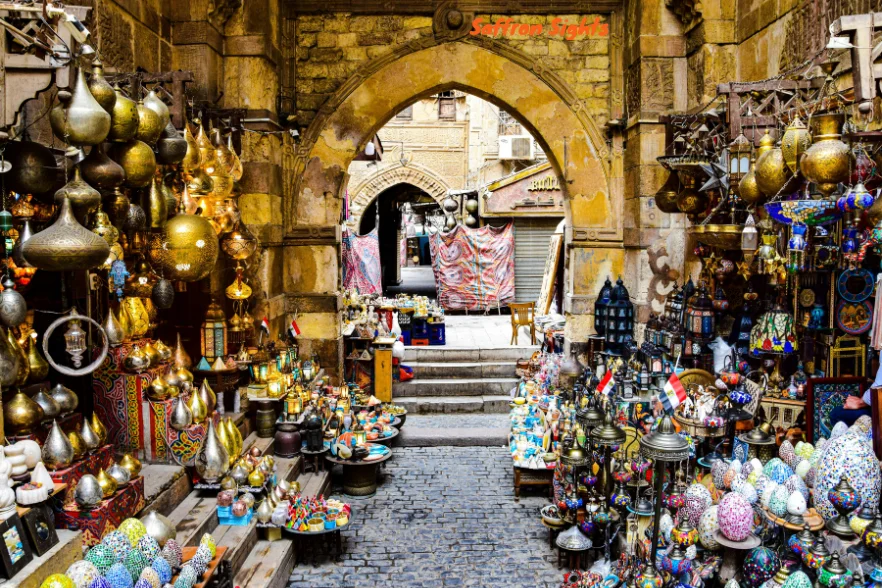
Lac bangles shine in bright colors. Metal tools and utensils line the shops. The click of glass and the ring of metal create a gentle rhythm here. During festival time, this market is especially busy. If you wear bangles, the shopkeepers can size them to fit your wrist.
Shopping tips for students and families:
Set a budget before you go. Ask for prices with a smile. Bargain politely. Support shops that clearly make or source from local artisans. Avoid anything that looks like it harms animals or culture. Enjoy the process, not just the purchase.
Chokhi Dhani: A Village Evening Under the Stars
Chokhi Dhani is a cultural village on the edge of the city. It recreates rural life with mud huts, folk dances, puppet shows, and food served on leaf plates. You can ride a camel, watch magic tricks, and listen to songs. The idea is to bring many parts of Rajasthan together in one place so you can experience them in one evening.
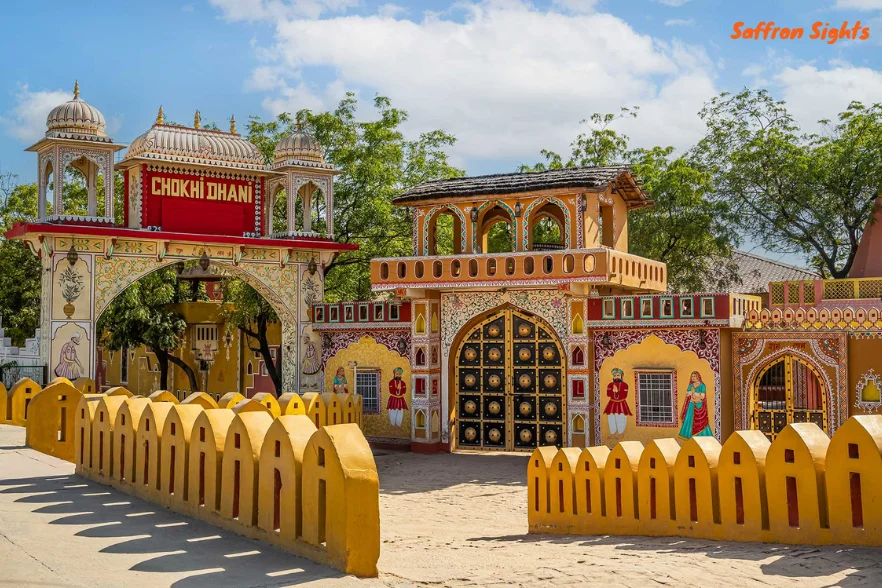
What you learn:
Traditions stay alive when people share them. Music, dance, crafts, and food all carry stories. Here you enjoy a friendly mix of all these. It is a nice way to end a busy day of sightseeing.
Hands On Culture: Museums, Walks, and Workshops
Anokhi Museum of Hand Printing
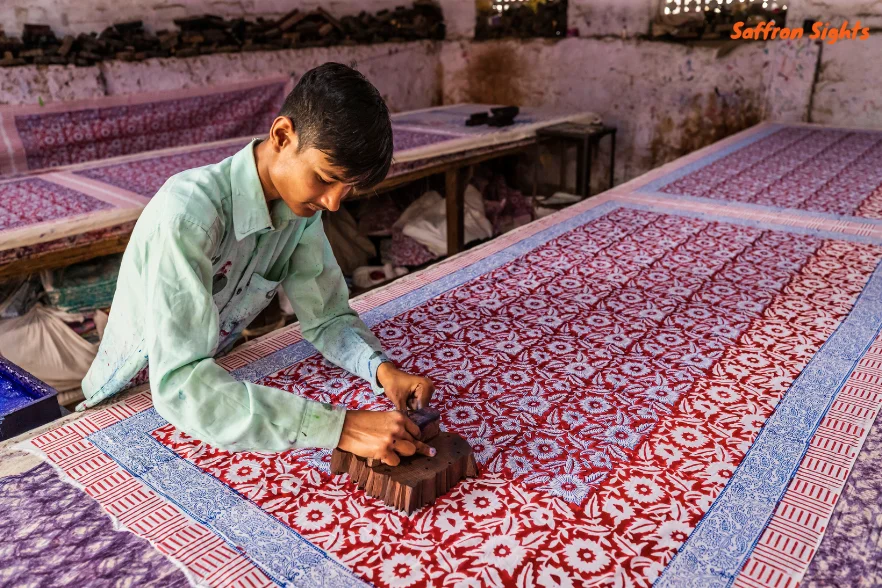
Set in a restored haveli near Amber, this small museum shows how block printing works. You see wooden blocks, natural dyes, and finished textiles. Sometimes there are live demonstrations. You may even try printing a small piece yourself. This teaches patience, repeatable patterns, and the beauty of slow, careful work.
Jhalana Leopard Safari
Just outside the city is a wildlife area where leopards live. Guides take you in jeeps to look for animals from a safe distance. You might also spot foxes, deer, and many kinds of birds. Nature and city life are close neighbors here. It reminds us to protect habitats even when cities grow.
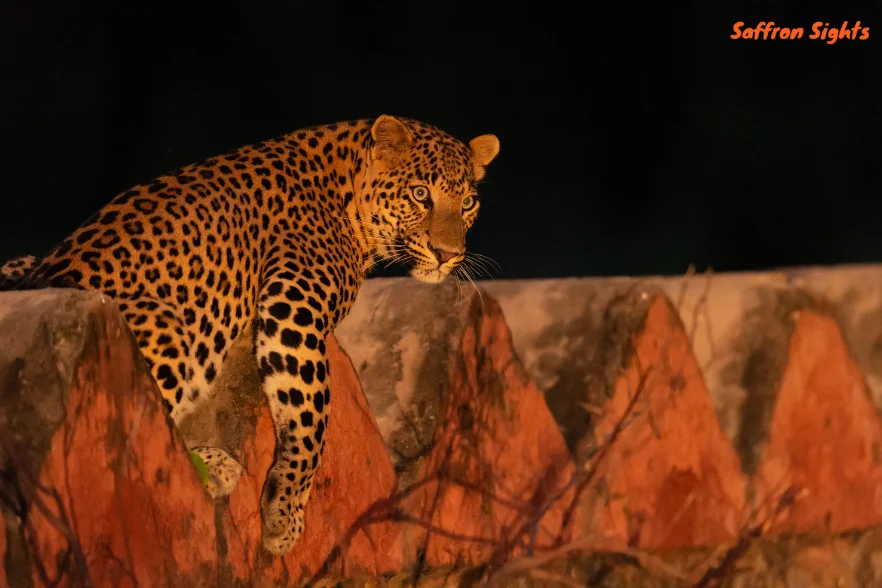
Blue Pottery Workshops
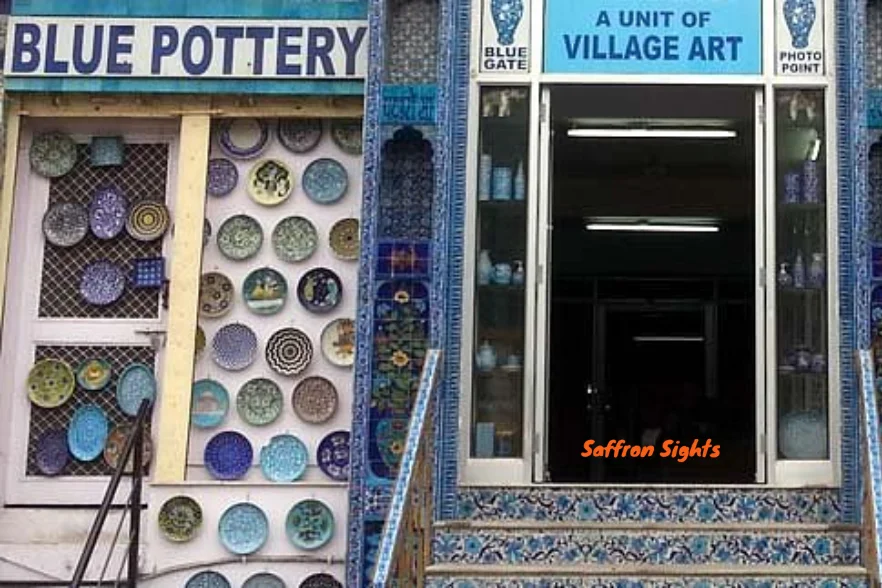
Jaipur’s blue pottery uses quartz and special glaze. The colors are soft blues and turquoise with floral designs. Visit a workshop if you can. Watching an artisan paint a flower on a bowl with steady hands is a quiet and inspiring moment. If there is a class, try painting your own small piece.
Heritage Walks in the Old City
Guided walks through narrow lanes reveal hidden temples, tiny craft studios, and food stalls that regular tours miss. You learn small secrets of daily life. You see a goldsmith bend over his bench or a printer lay fabric out in the sun. These walks help you slow down and notice.
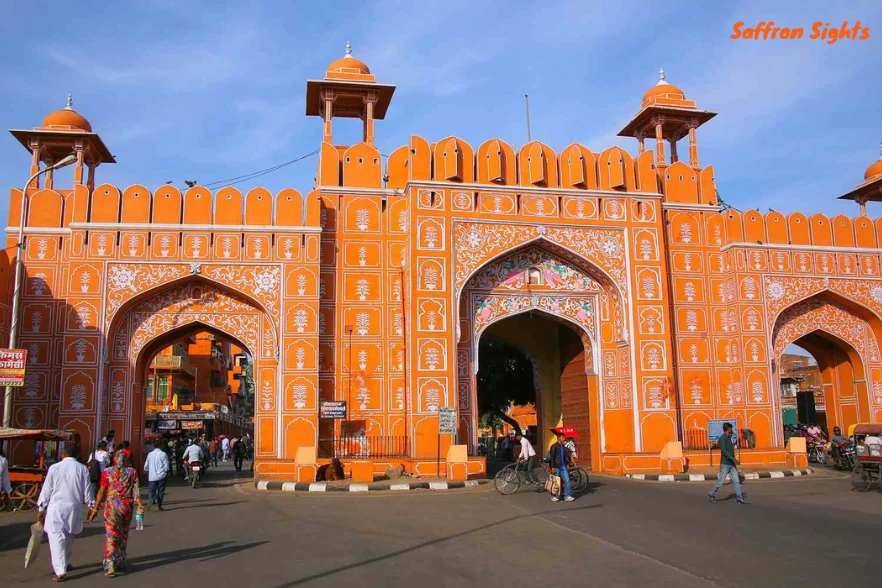
The Taste of Jaipur: Simple Food, Big Flavors
Jaipur’s food is warm, spicy, and full of character. It reflects desert life and family traditions.
Masala Chowk
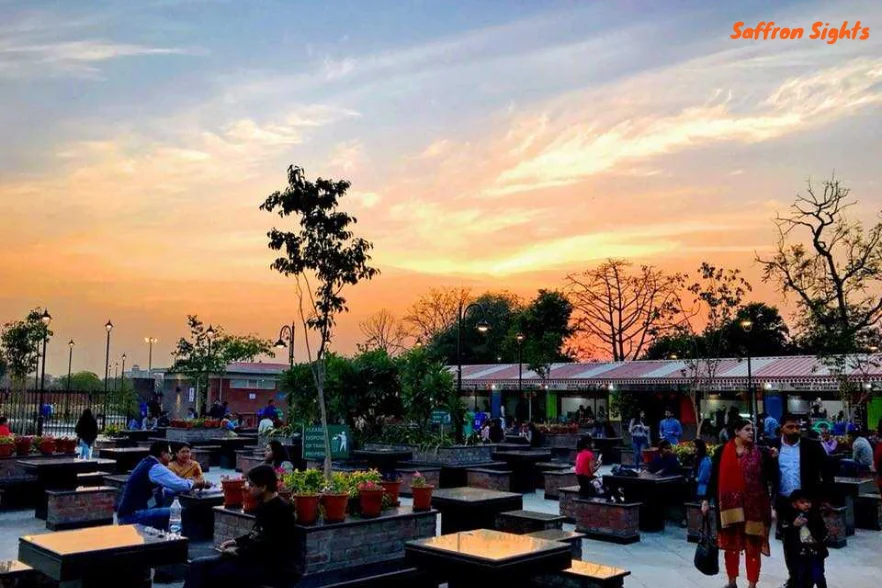
This outdoor food court gathers street food from different parts of the city. You can sample small plates and share with friends. It is clean, easy to reach, and friendly. Try chaat, pav bhaji, and other snacks. Bring water and napkins. Eat slowly to enjoy many flavors.
Rawat Misthan Bhandar
This shop is famous for Pyaaz Kachori, a round pastry filled with spicy onion mix. It is crispy and flavorful. Many travelers take a box to share. It is a great breakfast or snack.
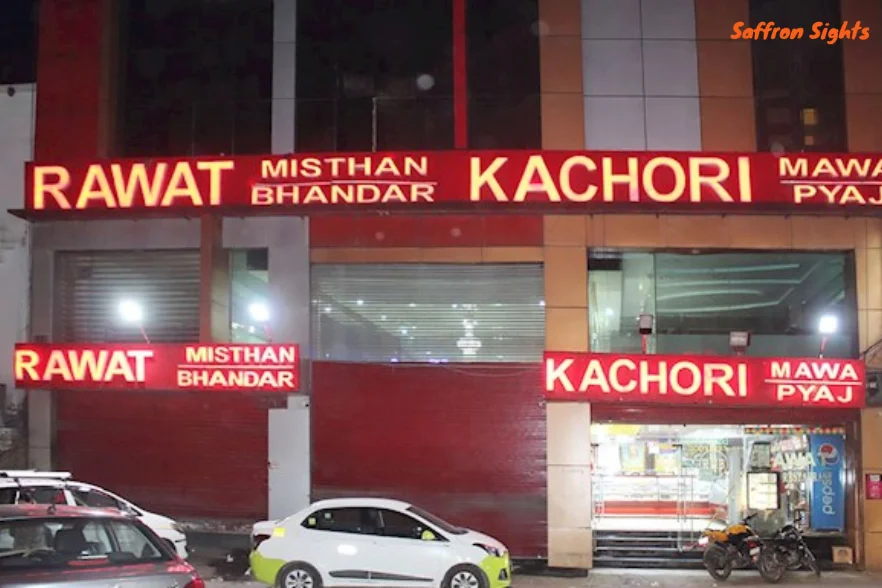
Lassiwala on MI Road
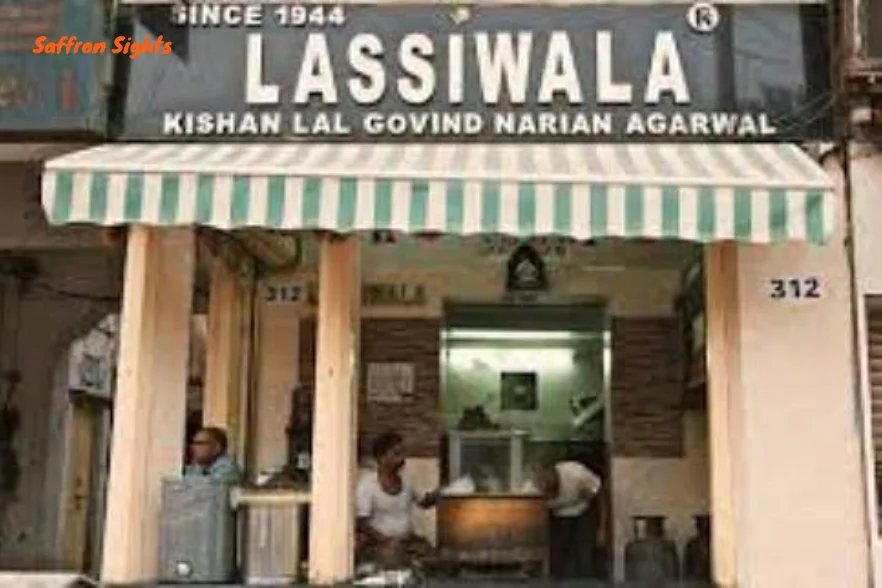
Lassi is a thick yogurt drink served in clay cups called kulhads. The clay gives a natural smell and keeps the drink cool. This shop has been serving lassi for a long time. It is simple and refreshing, perfect on a warm afternoon.
Dal Baati Churma
This is the heart of Rajasthani food. Baati are round, baked wheat balls. Dal is a tasty lentil curry. Churma is a sweet crumble. You usually crush the baati, pour dal on top, add some ghee, and finish with churma. It is filling and fun to eat.
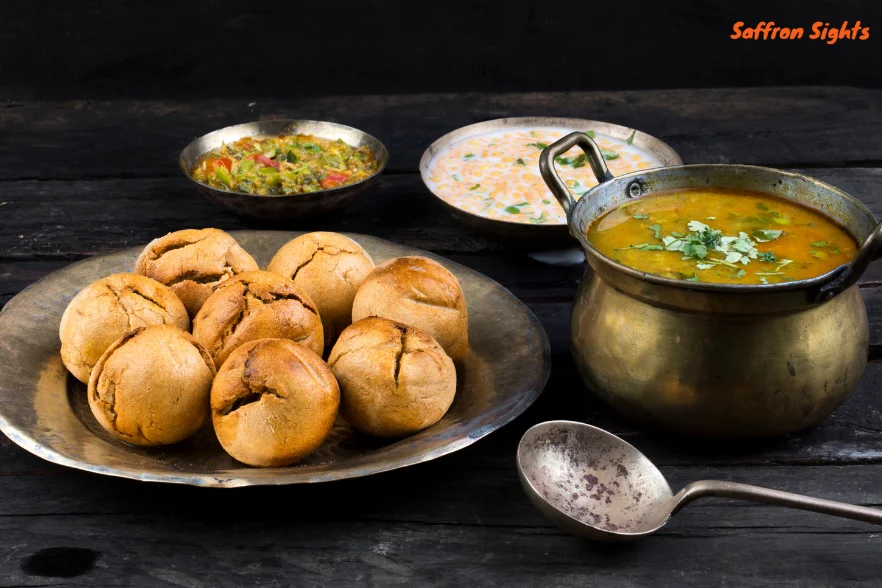
Ghewar
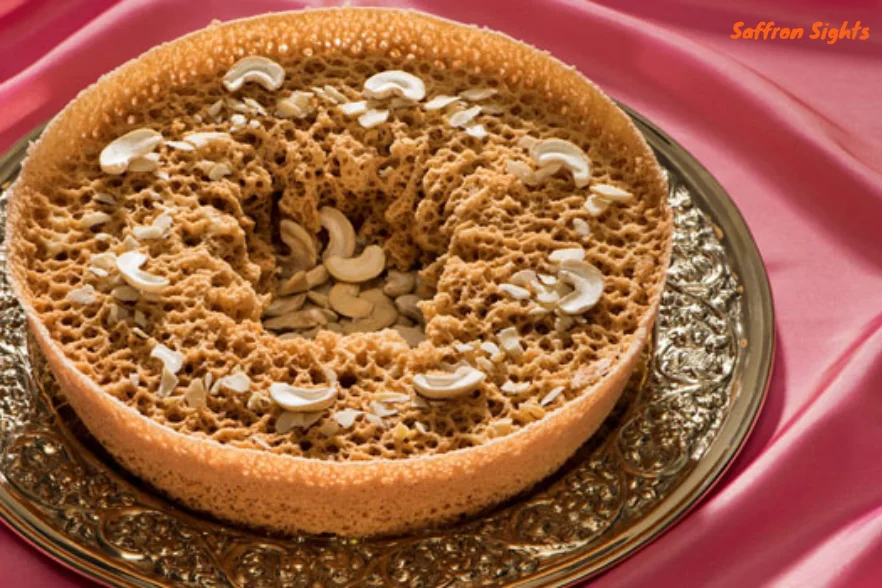
Ghewar is a festive sweet that looks like a honeycomb cake. It is dipped in sugar syrup and sometimes topped with thickened milk. It is a treat often enjoyed during monsoon festivals.
Food tips:
Try new dishes in small portions first. Drink clean water. Carry hand wipes. If you have allergies, ask about ingredients. Most places are happy to explain.
When To Visit, What To Pack, and How To Be a Kind Traveler
Best months:
October to March are cooler. April to June are hot. July to September is monsoon, which brings some showers and pretty clouds.
What to pack:
Light cotton clothes, comfortable shoes, a hat, sunscreen, and a refillable water bottle. In winter, mornings and late evenings can be chilly, so carry a light jacket.
Respect and safety:
Be polite at religious places. Cover your shoulders and knees if asked. Ask before taking photos of people. Cross roads carefully. Keep your phone charged. Use registered guides and official transport. Keep small change for tickets and snacks.
Support local:
Choose handmade items. Pay fairly. Do not feed wildlife. Say no to activities that may harm animals. Leave places as clean as you found them.
Learning from Jaipur: What Every Student Can Take Home
- Planning matters: Jaipur’s grid plan shows that smart design makes life easier.
- Art and science can be friends: Jantar Mantar and Sheesh Mahal prove that beauty and function can live together.
- Nature and buildings can cooperate: Jal Mahal and stepwells show harmony with water and climate.
- Crafts need care: Markets remind us that skills grow when families and communities pass them on.
- History is a teacher: Forts, palaces, and museums tell stories of wise choices and mistakes. Both teach us how to plan for the future.
A Day-By-Day Sample Plan
Day 1: Amber Fort in the morning. Panna Meena Ka Kund for photos. Jal Mahal view at sunset. Dinner near the lake.
Day 2: City Palace and Jantar Mantar. Lunch in the old city. Hawa Mahal view from a rooftop cafe. Evening at Bapu Bazaar.
Day 3: Nahargarh for sunset. On the way, stop at the Albert Hall Museum. Night walk near the walled city gates.
Day 4: Chokhi Dhani cultural evening. Try local dance steps, watch a puppet show, and enjoy a traditional meal.
Day 5: Blue pottery or block printing workshop. Tripolia Bazaar for bangles. Finish with lassi on MI Road.
You can mix and match this plan depending on your time and interests. Always leave space in your schedule for rest and surprises.
Jaipur: Past, Present, Future
Past:
Jaipur began as a model city that joined science, art, and fair rule. Streets were planned like a grid.
Craftsmen, astronomers, architects, and wise rulers built a place that felt organized and beautiful.
Knowledge-guided design. Culture gave it color. Community made it work.
Present:
Jaipur is a modern capital with universities, industries, and busy roads. The old walled city holds the heart of tradition.
New neighborhoods show fresh growth and ideas. Visitors arrive from everywhere and find both royal history and daily life living side by side.
Future:
Jaipur stays strong when heritage is protected and growth is managed with care. Clean travel, clever water use, and support for local crafts keep the city lovely and livable.
Students, families, and travelers carry home a respect for culture and nature. That simple respect can shape kinder choices in the world beyond the Pink City.
Short Guides for Each Major Spot
To make your trip planning even easier, here is a quick list for each key place.
| Place | Why go | When | What to do | Tip |
| Amber Fort | Grand hill fort and palace with mirror magic and sweeping views | Early morning or late afternoon | Walk the courtyards, see Sheesh Mahal, trace old cooling channels | Wear good shoes and a sun hat |
| Hawa Mahal | Iconic pink honeycomb with 953 windows | Morning light or late afternoon glow | Climb inside for bazaar views and feel the natural breeze | Best photos from across the street or a rooftop cafe |
| City Palace | Living royal complex with museums and painted gates | Late morning after breakfast | Sunny day for transparent shadows | Check ticket tiers for special areas |
| Jantar Mantar | Stone instruments that track time and stars with precision | Sunny day for clear shadows | Watch the sundial shadow move, learn what each tool measures | Ask a guide simple questions to unlock the science |
| Nahargarh Fort | The city’s favorite sunset balcony | Late afternoon into evening | Stroll Madhavendra Bhawan, wait for the sky to change colors | Carry a light jacket in winter |
| Jaigarh Fort | Stronghold with the famous Jaivana Cannon and long ramparts | Morning or late afternoon | Visit museum rooms with maps, coins, and metalwork | Paths are uneven, so wear sturdy shoes |
| Jal Mahal | Water palace that appears to float on the lake | Sunrise or sunset | Sit by the shore, watch birds, enjoy reflections | Still water makes perfect mirror photos |
| Albert Hall Museum | Art, crafts, and an Egyptian mummy in a beautiful building | Midday, when outdoor heat is high | Pick one theme, such as textiles, and study it well | Read labels and note a few facts to remember later |
| Birla Mandir | Peaceful white marble temple with calm views | Evening for gentle lighting | Sit quietly and slow down your thoughts | Dress modestly and follow posted rules |
| Galta Ji (Monkey Temple) | Holy springs, hillside temples, and old murals | Morning or late afternoon | Walk carefully and keep a safe distance from wildlife | Do not feed animals, and keep food sealed |
| Panna Meena Ka Kund | Stepwell with perfect geometric patterns | Broad daylight for full detail | Study the symmetry and frame-balanced photos | Mind your footing and respect local guidelines |
| Sisodia Rani Ka Bagh | Romantic garden with fountains and painted walls | Late afternoon for softer light | Rest on a bench and enjoy the quiet | Plan this as your slow break between busy stops |
| Johari, Bapu, Tripolia Bazaars | Jewelry, textiles, bangles, and metal craft | Evenings are lively and colorful | Explore, compare quality, buy with intention | Bargain kindly and support real artisans |
| Chokhi Dhani | Cultural village night with dance, music, and traditional food | Plan for an evening outing | Try a folk step, watch a puppet show, eat a thali | Come hungry and curious |
| Anokhi Museum, Blue Pottery, Heritage Walks | Hands-on learning with crafts and living history | Late morning or early afternoon | Try block printing or pottery painting, walk the old lanes | Ask questions. Artisans enjoy engaged visitors |
| Jhalana Leopard Safari | Wildlife experience close to the city | Morning or evening slots | Watch quietly, follow the guide, respect the habitat | Bring binoculars and follow safety rules |
Ready For Your Jaipur Journey
Jaipur feels like a storybook you can walk through. The pages are forts, palaces, streets, and kitchens. The characters are kings, queens, scientists, artists, shopkeepers, and cooks.
The lessons are in the shapes of windows, the flow of water, the taste of spices, and the rhythm of footsteps on old stone. If you are a student, Jaipur teaches patience and observation. If you are a traveler, Jaipur teaches respect and curiosity. If you are a dreamer, Jaipur gives you colors to paint your visions. The city is pink not only on the walls but also in spirit. It welcomes you, warms you, and sends you home with new thoughts.
When you visit, do not only look at the monuments. Listen to the echoes of prayers and songs. Taste sweet and spicy dishes. Touch the cool marble floors with your feet. Watch the sun drop behind Nahargarh and paint the city gold. Then you will know why Jaipur is called the Pink Gem of India.
And you will carry a part of its glow with you, ready to light up the next story you choose to explore.

